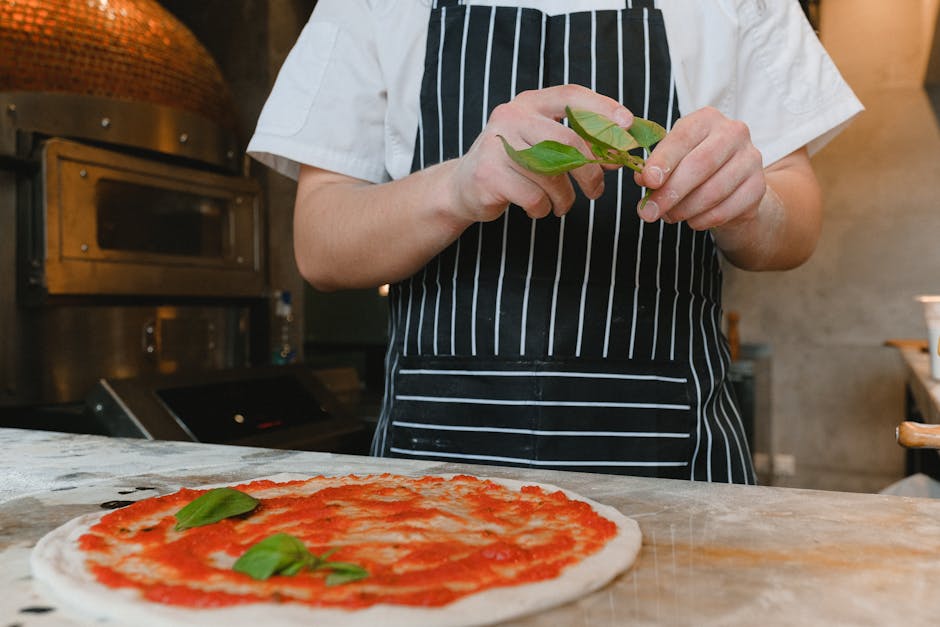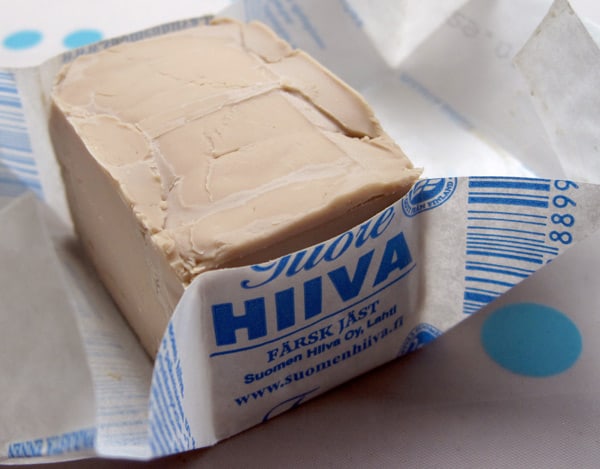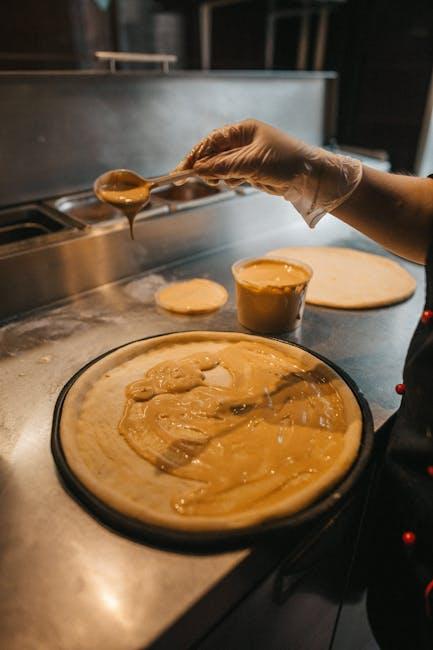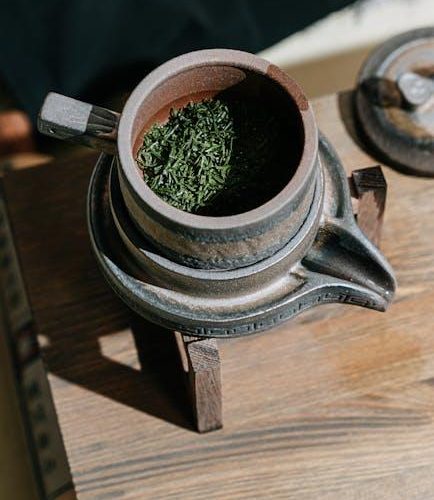When it comes to making Neapolitan pizza, choosing the perfect yeast is like picking a partner for a dance competition. You want someone who can keep up with the fast-paced action, add just the right amount of flavor, and never miss a beat. In this culinary showdown, the yeast is the unsung hero who quietly works behind the scenes to make sure your pizza is light, airy, and bursting with flavor. So grab your dough, crank up the oven, and let’s dive into the world of yeast selection for the ultimate Neapolitan pizza experience.
Contents
Understanding the Traditional Elements of Neapolitan Pizza
Neapolitan pizza, the holy grail of all pizzas, is a true work of art. To truly appreciate this classic dish, one must understand its traditional elements that make it stand out from the rest.
First and foremost, let’s talk about the dough. Neapolitan pizza dough is a special blend of type “00” flour, water, salt, and yeast. This combination creates a moist, elastic dough that is perfect for stretching and tossing. The dough must also undergo a slow fermentation process to develop its signature flavor and texture.
Next up, the sauce. Neapolitan pizza sauce is a simple yet flavorful blend of San Marzano tomatoes, olive oil, salt, and fresh basil. The tomatoes used in the sauce must be grown in the volcanic soil near Mount Vesuvius to achieve that perfect sweet and tangy flavor.
And of course, we can’t forget about the toppings. Traditional Neapolitan pizza toppings are limited to a few classic ingredients, including fresh mozzarella cheese, basil, and extra-virgin olive oil. These simple toppings allow the flavors of the dough and sauce to shine through, creating a harmonious and delicious pizza experience.

Different Types of Yeast Used in Neapolitan Pizza Dough
When it comes to making Neapolitan pizza dough, the type of yeast you use can greatly affect the flavor and texture of your final product. Here are some of the different types of yeast commonly used in Neapolitan pizza dough:
- Active dry yeast: This classic yeast is easy to find in most grocery stores and provides a consistent rise in pizza dough. Just like those people who always show up to parties and never fail to bring the fun!
- Instant yeast: Similar to active dry yeast, but it doesn’t require proofing and can be added directly to the dough. It’s like the lazy cousin of active dry yeast – always ready to jump right into the action!
- Fresh yeast: Also known as cake yeast, this type of yeast is more commonly used in professional kitchens. It adds a unique flavor profile to the dough and makes it rise like there’s no tomorrow. Fresh yeast is like that talented friend who always brings something special to the table!
Experimenting with different types of yeast can be a fun way to customize your Neapolitan pizza dough and find the perfect flavor and texture for your taste buds. So go ahead, grab some yeast and embark on a delicious pizza-making adventure!
Factors to Consider When Selecting Yeast for Neapolitan Pizza
Now, let’s talk about the important factors to consider when selecting yeast for your Neapolitan pizza. You don’t want to ruin that beautiful pizza dough with the wrong yeast, do you?
First and foremost, consider the yeast’s fermentation power. You want a yeast that can make your pizza dough rise like a champ, giving you that perfect airy and chewy crust. Look for yeast strains that are known for their strong fermentation abilities, like Saf-Instant Yeast or Red Star Platinum Yeast.
Next, think about the flavor profile the yeast will add to your pizza. Some yeasts can add subtle hints of sweetness or nuttiness to the dough, enhancing the overall taste of your pizza. Consider trying out different yeast strains to see which one complements your pizza’s flavors the best.
Lastly, don’t forget about the temperature requirements of the yeast. Make sure to select a yeast that thrives in the warm temperatures typically used in Neapolitan pizza baking. You don’t want your yeast to be sluggish and slow to rise, resulting in a dense and heavy crust. Keep your yeast happy and it will reward you with the perfect pizza every time!

Comparing Dry Yeast vs. Fresh Yeast for Neapolitan Pizza
So you’ve decided to venture into the world of making Neapolitan pizza at home, and now you’re faced with the age-old question: dry yeast or fresh yeast? Let’s break it down for you in a way that even the most dough-challenged pizza enthusiast can understand.
First up, let’s talk about the classic dry yeast. It’s like the reliable older sibling of the yeast world. It’s easy to find, easy to store, and easy to use. Just sprinkle it on top of your flour like a fairy dust of fermentation and watch your dough rise like magic. Plus, it has a longer shelf life than fresh yeast, so you can stock up and never be caught without a leavening agent in a pinch.
Now, fresh yeast is like the cool kid at the pizza party. It’s more elusive, harder to find, and requires a bit more attention than its dry counterpart. You have to dissolve it in warm water before adding it to your flour, like you’re coaxing a shy teenager out of their shell. But once you get to know it, fresh yeast brings a depth of flavor and complexity to your dough that dry yeast just can’t match. It’s like having a secret ingredient that makes your pizza stand out from the crowd.
So, in the battle of dry yeast vs. fresh yeast for Neapolitan pizza, the choice is yours. Are you team reliable and easy, or team cool and complex? Whichever you choose, just remember that the most important ingredient in any pizza is love (and maybe a generous sprinkle of cheese).

Tips for Activating and Proofing Yeast for the Perfect Neapolitan Pizza
So, you want to make the perfect Neapolitan pizza, huh? Well, activating and proofing your yeast is a crucial step in achieving that authentic, pillowy crust. Here are some tips to ensure your yeast is as lively as a toddler on a sugar high:
First things first, make sure your water is at the perfect temperature – not too hot, not too cold. Think Goldilocks, but with more yeast involved. **Use a thermometer** to make sure it’s around 105-110°F. Your yeast will thank you for it.
Secondly, add a pinch of sugar to the mix. Yeast loves to eat sugar, it’s like candy to them. **Give those little guys a treat** and watch them multiply and do their happy dance.
Lastly, let your yeast proof in a warm, cozy place. Think of it as a mini spa day for your yeast. **Find a nice spot in your kitchen, away from drafts, and let it do its thing**. Before you know it, you’ll have a batch of yeast that’s ready to create the crust of your dreams.
Experimenting with Wild Yeast Cultures in Neapolitan Pizza Dough
So, you’ve decided to take your Neapolitan pizza game to the next level and experiment with wild yeast cultures in your dough. Bravo, my dough-slinging friend, bravo.
Let’s get one thing straight – wild yeast is like the free-spirited cousin of commercial yeast. It’s unpredictable, finicky, and totally worth the gamble. Who knows, you might just stumble upon the secret ingredient that takes your pizza from good to mind-blowingly amazing.
Here are a few tips to help you navigate the wild world of wild yeast:
- Start small – don’t overhaul your entire recipe at once. Experiment with different wild yeast strains in small batches to see which one gives you the results you crave.
- Be patient – wild yeast takes its sweet time to do its magic. Embrace the slow fermentation process and let nature do its thing.
- Embrace imperfection – wild yeast can be a fickle beast. Your dough might not rise as much as you’d like or the flavor profile might be a tad off. Roll with the punches and consider it a learning experience.
Conclusion: Finding the Ideal Yeast for Your Neapolitan Pizza Recipe
So, there you have it! After experimenting with various types of yeast for your Neapolitan pizza recipe, you have finally found the one that perfectly complements your dough. Now you can confidently whip up a batch of delicious pizza dough without any fear of it falling flat, literally!
Whether you ended up choosing fresh yeast for its unrivaled ability to create the perfect airy and chewy crust, or instant yeast for its convenience and reliability, the important thing is that you have discovered the ideal yeast for your pizza-making adventures.
Remember, the key to a great Neapolitan pizza lies in the dough, and the yeast you choose plays a crucial role in achieving the perfect texture and flavor. So, pat yourself on the back for putting in the time and effort to find the yeast that takes your pizza to the next level!
Now, armed with your newfound knowledge on yeast, go forth and conquer the world of Neapolitan pizza. Experiment with different toppings, sauces, and baking techniques to create the ultimate pizza masterpiece. Who knows, maybe one day your friends and family will be lining up at your door begging for a slice of your perfectly crafted Neapolitan pizza!
FAQs
What factors should I consider when choosing yeast for Neapolitan pizza?
First and foremost, you need to consider the type of pizza you want to make. Are you going for a light and airy crust or a chewier one? This will dictate whether you use a fast-acting yeast or a slower-acting one. Additionally, you should also take into account the temperature and humidity of your kitchen, as these factors can affect how your yeast will perform.
Can I use any type of yeast for Neapolitan pizza?
While you technically can use any type of yeast for Neapolitan pizza, it’s important to note that different types will yield different results. If you want that classic, chewy Neapolitan crust, opt for fresh or active dry yeast. Instant yeast can work in a pinch, but it may not give you the same texture and flavor.
How do I know if my yeast is active?
One way to test if your yeast is still active is to mix it with warm water and a pinch of sugar. If it foams and bubbles after a few minutes, then your yeast is good to go. If it doesn’t do anything, it may be time to invest in some fresh yeast.
Are there any special techniques for working with yeast in Neapolitan pizza dough?
When working with yeast in Neapolitan pizza dough, it’s important to let it do its thing and develop flavor. This means letting your dough rise for at least 24 hours in the fridge. Additionally, be sure to knead your dough well to help activate the yeast and create that perfect crust.
—
Oh Doughn’t You Want to Make the Perfect Neapolitan Pizza?
Well, there you have it – the secret ingredient to crafting the perfect Neapolitan pizza lies in choosing the right yeast. So, go on and knead your dough like a pro, let it rise to pizza perfection, and take a big cheesy bite into a slice of Neapolitan nirvana. Just remember, when it comes to pizza-making, the yeast is truly the rise and shine of it all! Bon appétit!




